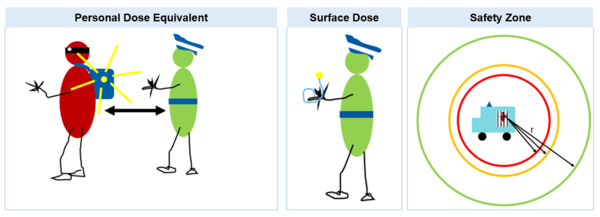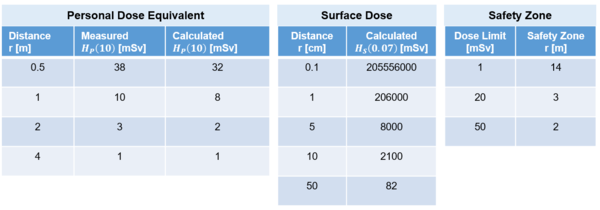Estimation of dose of a brachytherapy source to train public authorities for an emergency situation
Michael Baumgartl,
Switzerland
PO-2175
Abstract
Estimation of dose of a brachytherapy source to train public authorities for an emergency situation
Authors: Michael Baumgartl1, Marco Ackermann2, Klara Uher1, Stephanie Tanadini-Lang1
1University Hospital Zurich, Department of Radiation Oncology, Zurich, Switzerland; 2Stadtpolizei Zurich, Kommissariat Intervention, Zurich, Switzerland
Show Affiliations
Hide Affiliations
Purpose or Objective
In HDR brachytherapy, a HASS at the shape of a pellet and the of a rice grain is used to treat interior/superficial target volumes. In Switzerland, with the revised radiological protection ordinance the public authorities have been starting to focus more on prevention, detection and intervention of HASS. The latest raised the question on personal exposure due to radiation from an abandoned/stolen clinical iridium-192 source. To teach public authorities for such a scenario, an estimation of the personal dose equivalent Hp (10) and surface dose Hs (0.07) to extremities at certain distances for a given time caused by a source were estimated. Three potential scenarios complemented with dose measurements are meant to help to understand the impact of exposure and of setting up a safety zone r around potential location of a source.
Material and Methods
A nominal activity of 370GBq, different exposure times t, distances r to the source and a point source were assumed.
Scenario 1 (Hp (10)): An officer is operating in close environment to a suspect with a source(t=10min).
Scenario 2 (Hs (0.07)): An officer is securing a source with his hand(t=10s).
Scenario 3 (safety zone): A suspect with a source is arrested and a safety zone r established until a radiation protection expert arrives(t=3h).
As a mathematical approach to calculate Hp (10), Hs (0.07) and safety zone r, the dose coefficient for a clinical iridium-192 source, the inverse square law and three annual dose limits have been used. Measurements for Hp (10) with a personal electronic dosimeter were performed in a brachytherapy treatment room for comparison.

Results
Scenario 1: If an officer needs 10min in 0.5m distance of the source to secure the suspect with the source he receives a dose of approximately 38mSv (table 1). This theoretical value was confirmed with a measurement (32 mSv). In Switzerland a dose of 100mSv is allowed in case of an emergency, so the officer is allowed to stay a maximum of 30min in that distance.
Scenario 2: During securing of the suspect the officer should avoid touching the source and keep a minimum distance of 5cm to avoid ulceration within skin (> 20000mSv) and necrosis (>25000mSv). Expected surface doses can be found in table 2.
Scenario 3: A safety zone of 14m should be established in case of a secured HASS to avoid exceeding the dose limits for members of the public (1mSv). Occupational exposed workers (OPW) (20mSv) and OPW (confirmed by authorities – 50mSv) might have separate zones avoiding to be closer than 3m (table 3).

Conclusion
Public authorities have been provided with the results of the dose estimations to train and prepare special forces responsible for intervention. A potential threat of an abandoned source placed in a public spot, the radiation exposure can have a significant radiobiological impact on the state of health of a person. The involvement of radiation protection expert in severe incidents is inevitable to keep exposure to public members as low as possible.